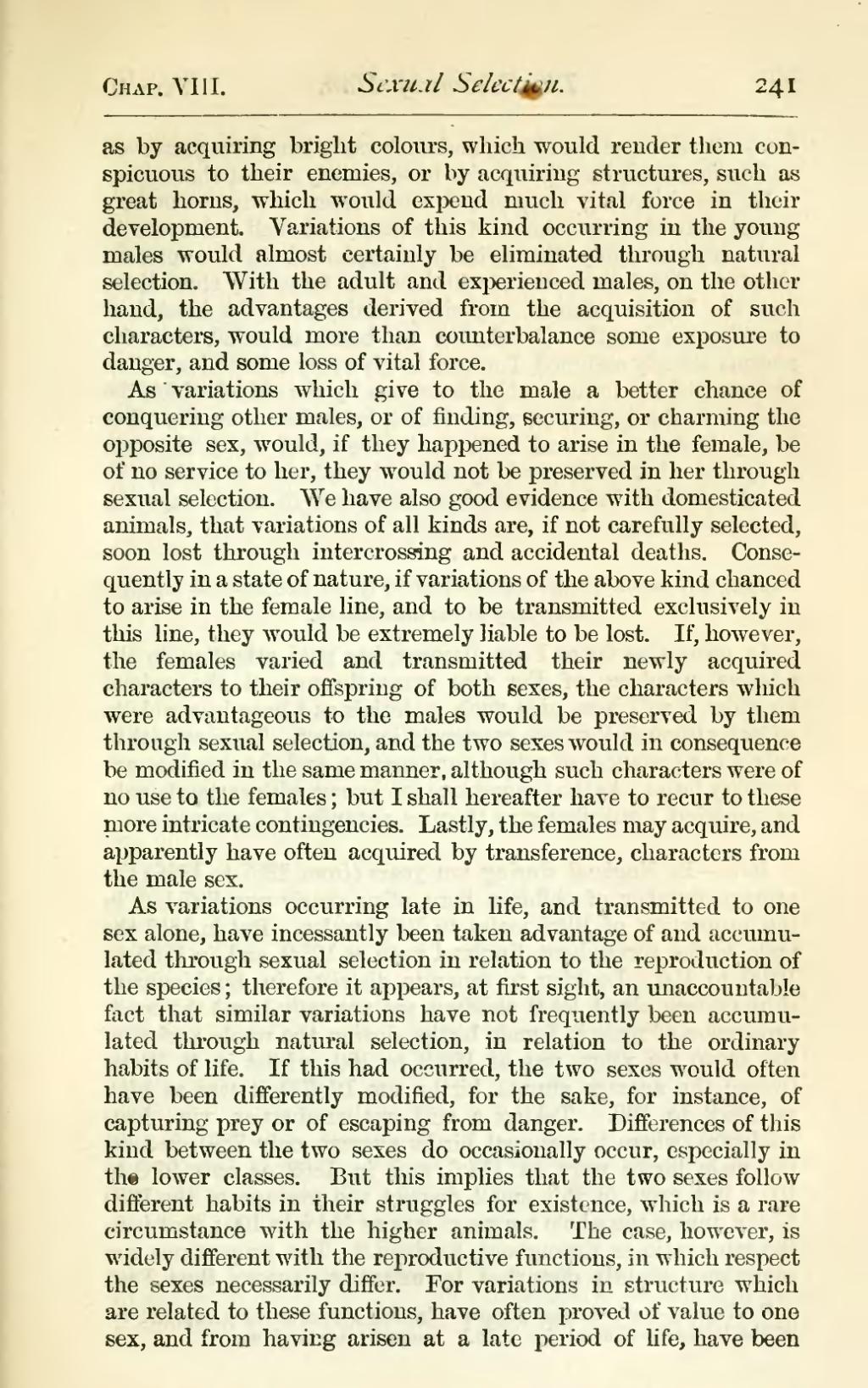as by acquiring bright colours, which would render them conspicuous to their enemies, or by acquiring structures, such as great horns, which would expend much vital force in their development. Variations of this kind occurring in the young males would almost certainly be eliminated through natural selection. With the adult and experienced males, on the other hand, the advantages derived from the acquisition of such characters, would more than counterbalance some exposure to danger, and some loss of vital force.
As variations which give to the male a better chance of conquering other males, or of finding, securing, or charming the opposite sex, would, if they happened to arise in the female, be of no service to her, they would not be preserved in her through sexual selection. We have also good evidence with domesticated animals, that variations of all kinds are, if not carefully selected, soon lost through intercrossing and accidental deaths. Consequently in a state of nature, if variations of the above kind chanced to arise in the female line, and be transmitted exclusively in this line, they would be extremely liable to be lost. If, however, the females varied and transmitted their newly acquired characters to their offspring of both sexes, the characters which were advantageous to the males would be preserved by them through sexual selection, and the two sexes would in consequence be modified in the same manner, although such characters were of no use to the females; but I shall hereafter have to recur to these more intricate contingencies. Lastly, the females may acquire, and apparently have often acquired by transference, characters from the male sex.
As variations occurring later in life, and transmitted to one sex alone, have incessantly been taken advantage of and accumulated through sexual selection in relation to the reproduction of the species; therefore it appears, at first sight, an unaccountable fact that similar variations have not frequently been accumulated through natural selection, in relation to the ordinary habits of life. If this had occurred, the two sexes would often have been differently modified, for the sake, for instance, of capturing prey or of escaping from danger. Differences of this kind between the two sexes do occasionally occur, especially in the lower classes. But this implies that the two sexes follow different habits in their struggles for existence, which is a rare circumstance with the higher animals. The case, however, is widely different with the reproductive functions, in which respect the sexes necessarily differ. For variations in structure which are related to these functions, have often proved of value to one sex, and from having arisen at a late period of life, have been
